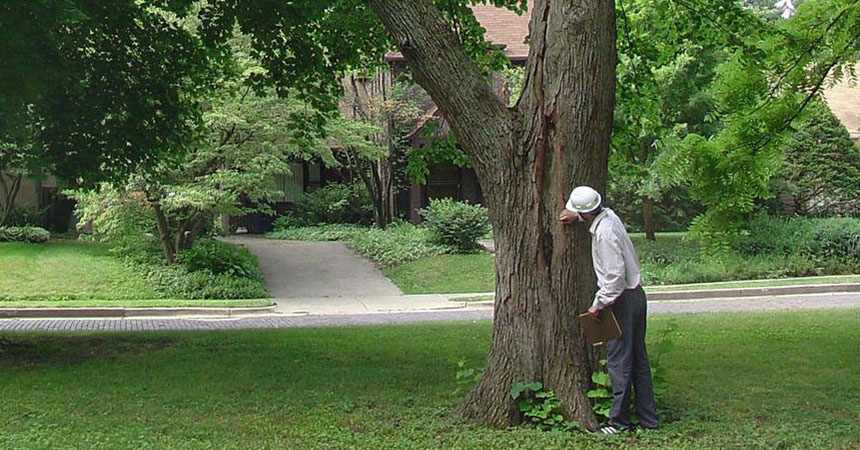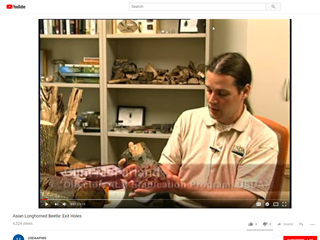
IDaids for Tree Check Month
August is Tree Check Month because it is an ideal time to check your trees for signs of the invasive and destructive Asian longhorned beetle (ALB). ALB is currently restricted to a few small regions of the country, but invasive species may occur anywhere. We gathered this set of IDaids to highlight three invasive pests that could be lurking in your neighborhood trees. These IDaids support citizens when checking their trees for the pests themselves as well as for the signs and symptoms of infestation. Find the region in which you live, and learn more to help protect our natural resources. Better yet, read about all three pests because the spread of these pests are partly due to human activities such as moving firewood, so education, diligence, and citizen involvement will help halt their paths of destruction.
Northeastern and Midwestern regions (detected in NY, MA, and OH): The Asian longhorned beetle (Anoplophora glabripennis [ALB]), native to Asia, is a distinctive black beetle with white spots and long black and white antennae. Yet seeing the insect itself is not always the first tell-tale sign it’s present; rather, tree symptoms such as exit holes, dead crowns, and frass are good indicators. ALB attacks several hardwood species, many of which are common ornamental and shade trees, including Acer spp. (maple), Betula spp. (birch), and Ulmus spp. (elm).
Asian Longhorned Beetle: Exit Holes
United States Department of Agriculture (USDA)
This short video shows the exit holes observed on trees.
Asian Longhorned Beetle
University of Massachusetts Extension, United States of America
This longer video covers host species, host symptoms, beetle identification, and how to distinguish it from a similar-looking native sawyer (Monochamus spp.) beetle.
Check Your Trees for the Asian Longhorned Beetle Handout
United States Department of Agriculture (USDA)
A printable, foldable pocket guide. Give it to youngsters to get them involved.


